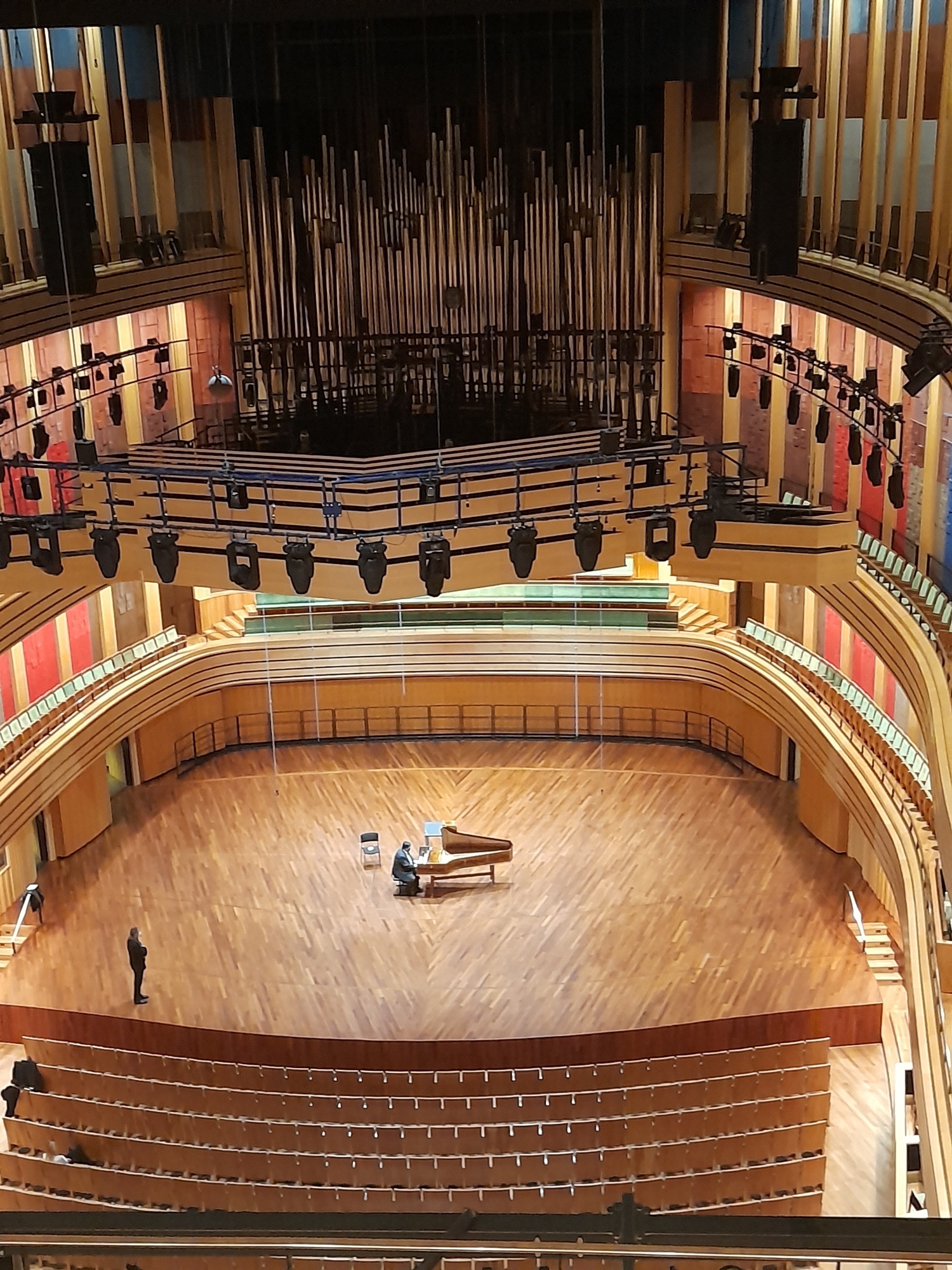
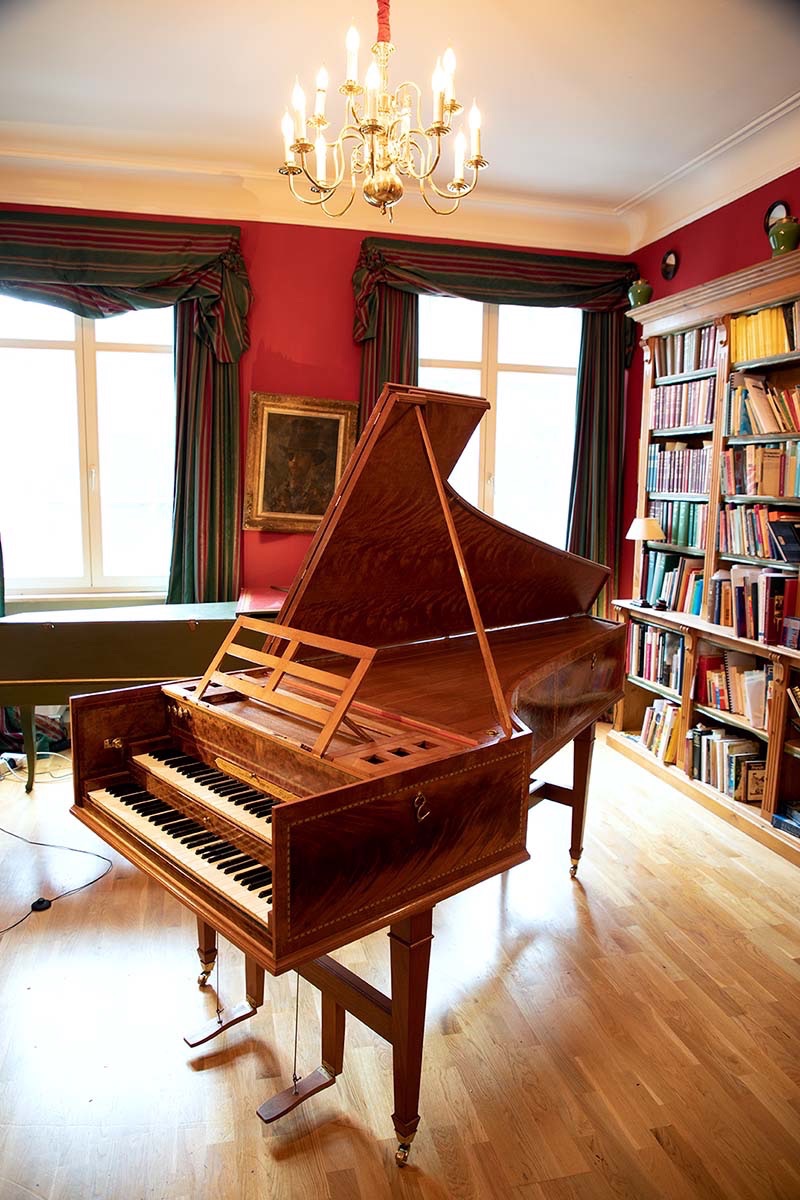
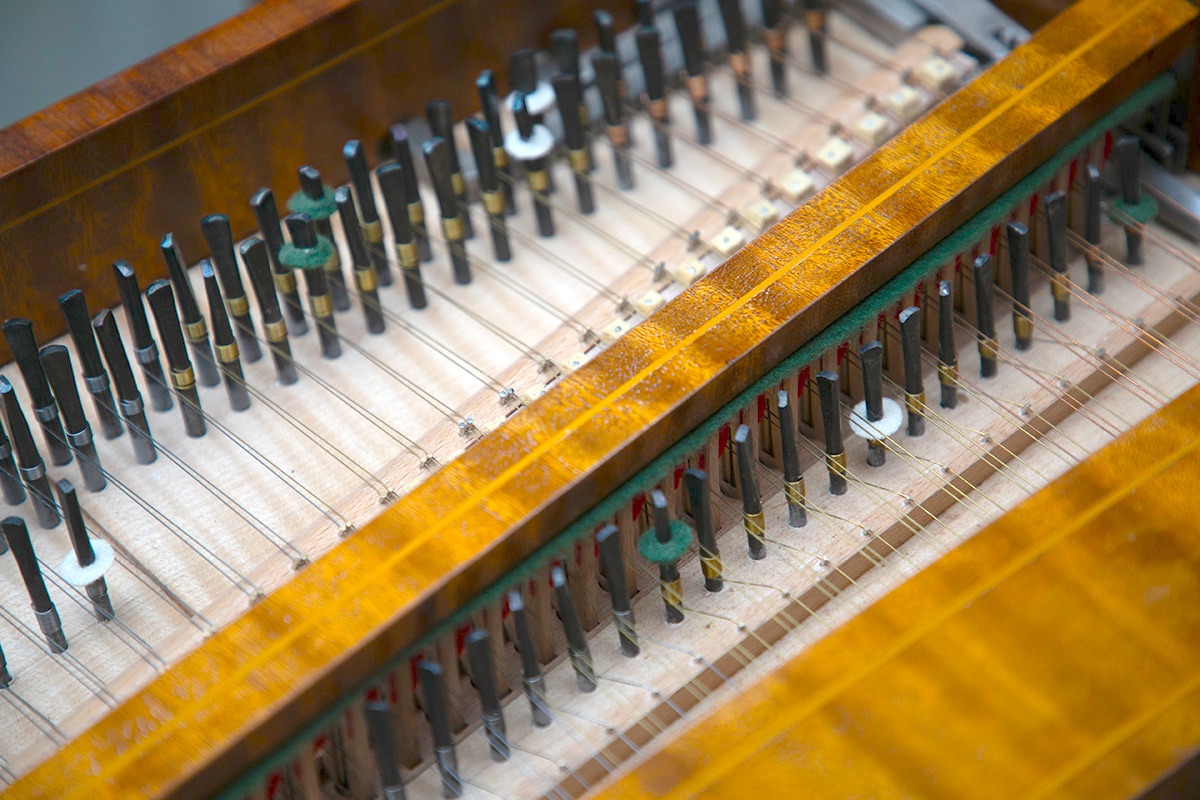
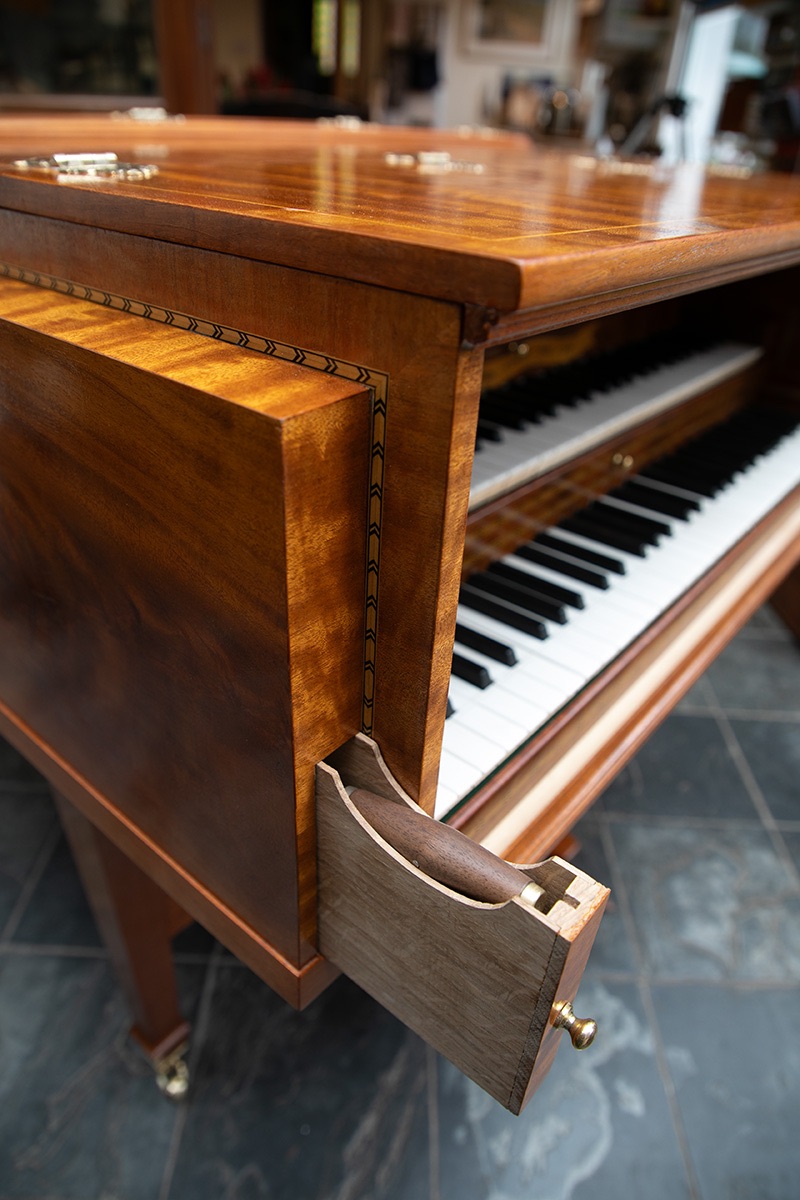
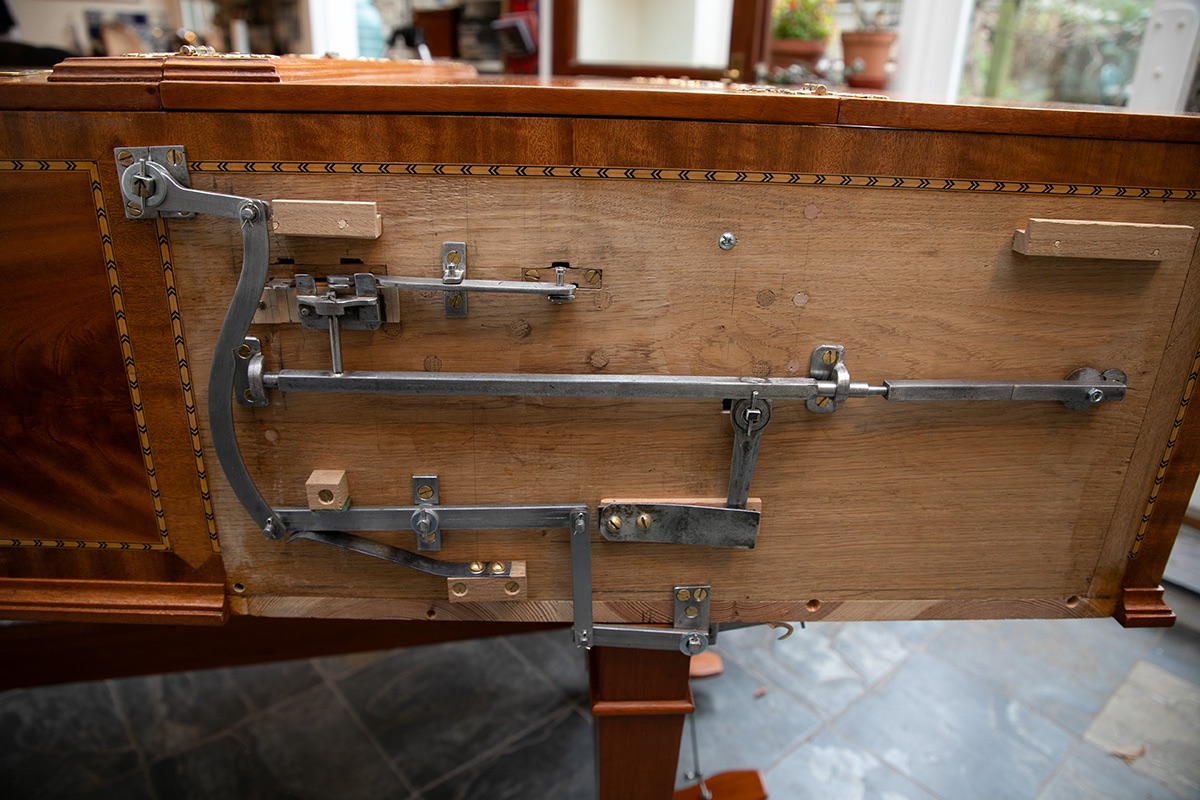
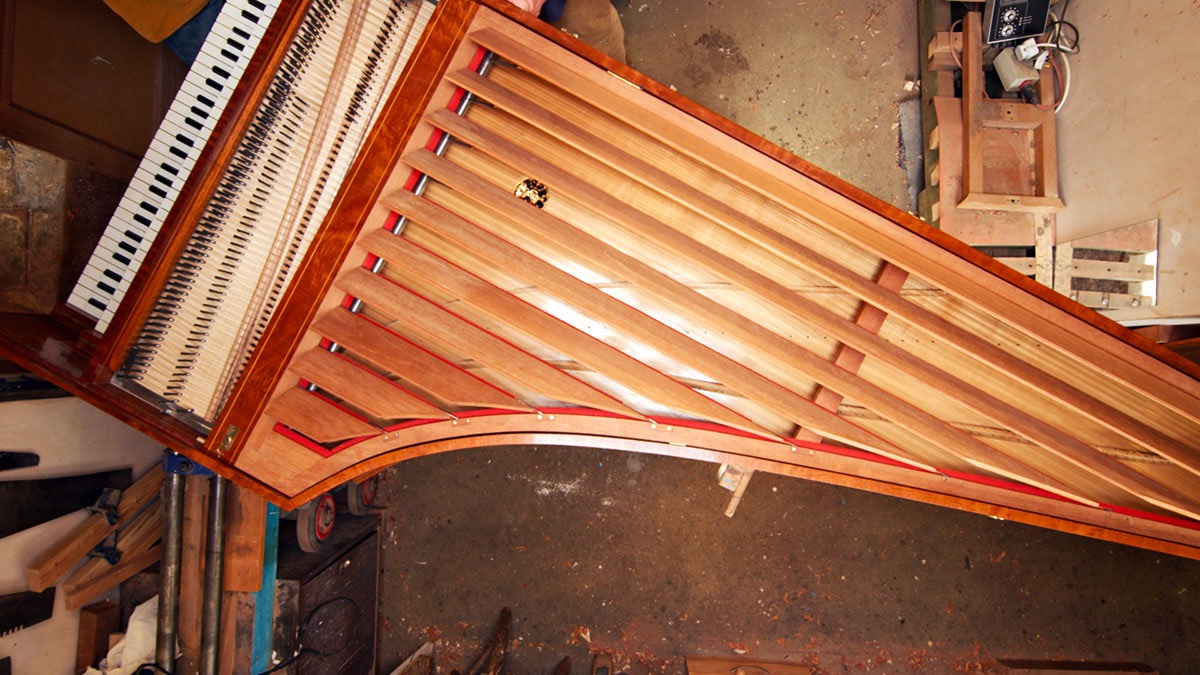
This is based on the one made by Jacob and Abraham Kirckman in 1786, which used to belong to John Barnes, and it is typical of late 18th century English production.
The large, heavy case is made of oak, dove-tailed at the corners. I have slightly modified Kirckman's internal bracing in order to overcome the well-known problem of “cheek disease” with which many of his instruments are afflicted, (albeit after over 200 years and often under continuous tension for all that time). It is veneered in flame mahogany, with cross-banding and inlaid lines. The decorative brass hinges are expertly made by the lost wax process by David Law. The lid is veneered to match the case. The inside is also veneered with various combinations of woods possible. The disposition is the standard one for large late English doubles, that is two eight foot and one four-foot choirs, lute stop and harp (buff) stop (on the back 8) with dog leg jacks on the front eight foot. The compass is five octaves FF to f´´´ and the keyboards have bone naturals (usually camel bone) and ebony sharps. Transposition is available to A 415 and A 440. An extended compass up to g''' is also available.
Two authentic 18th century extras are available: the Venetian swell, operated by the right foot allows the player to control the volume of sound with some subtlety, but can be lifted out of the way (or completely removed) when not required. The machine stop, operated by the left foot, allows the player to cancel the 4 foot and swap the front 8 for the lute stop without removing the hands from the keyboards. A more sophisticated version performs this change in two stages. In order to allow transposition with the machine stop I have modified Kirckman's arrangement of the two manuals as well as the linkage of the machine, but the appearance is just as Kirckman would have recognised. The blacksmith's work of the machine and swell is almost the same as his and is enclosed in a box on the spine just as his was.
The usual stand has tapered square legs with casters and can be dismantled for transport. The music desk is a copy of Kirckman's and very sophisticated: it can be slid backwards and forwards, tilted at various angles and raised and lowered. There is a shelf either side for a candlestick and the whole thing can be collapsed to fit inside the case with the lid closed.
The sound is unmistakeable: grand, noble and brilliant and with great power. These instruments are as well suited to the modern concert hall as any harpsichord can be for either solo music or as part of an ensemble. Voicing with real bird quill is highly recommended as this allows the harpsichord to produce the maximum sound whilst maintaining a light action.